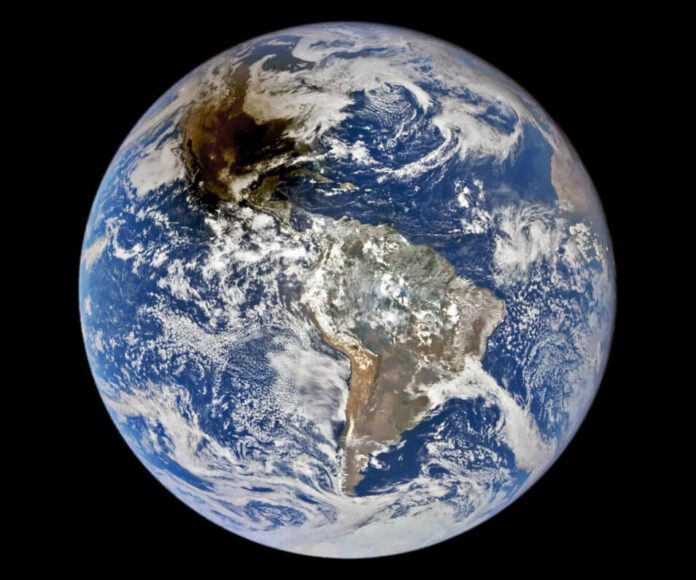
An Annular Solar Eclipse Captures Global Attention
On October 14, an annular solar eclipse was visible in parts of North America. This phenomenal spectacle could be marvelled at not only from the Earth’s surface but also from outer space.
A solar eclipse occurs when the moon positions itself exactly between the sun and the Earth, blocking the sunlight. This obstruction reduces the amount of light that reaches the Earth’s surface. The moon’s shadow was notably visible in the space photograph of the week, significantly darkening a large portion of North America compared to other continents.
The Deep Space Climate Observatory’s Contribution
The photograph was captured by a camera on the Deep Space Climate Observatory (DSCOVR). This sun satellite, launched in February 2015, mainly monitors the solar wind. The satellite floats at the first Lagrange point between the Earth and the sun, similar to the solar observation satellite SOHO, allowing both satellites an uninterrupted view of the sun.
Live Streaming the Solar Eclipse
The annular solar eclipse was live-streamed by NASA. In the occurrence of an annular solar eclipse, the Earth-to-moon distance is greater than usual, causing the moon’s disc to appear smaller than the sun’s disc, as viewed from the Earth’s surface. As a result, the moon is incapable of completely covering the sun’s disc.
Next year, a total solar eclipse will occur in the US, during which, at its peak, the solar atmosphere (corona) will be visible. Interested in witnessing a total solar eclipse firsthand? On August 12, 2026, a total solar eclipse will be visible in northern Spain.











